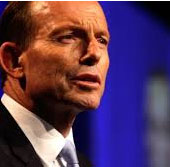by Rona Fried
Who would have predicted that Central America would become a renewable energy leader, while Australia lags way behind?
Starting from practically zero renewable energy, Central America will install over 2.3 gigawatts (GW) over the next five years, a huge advance from the mere 100 megawatts in 2013.
Mexico is by far the leader, with $1.3 billion invested in the first half of 2014, almost double that of 2013. But last year, the other Central American countries combined also saw $1 billion in solar and wind investments. While financing for renewables still isn’t easy, most of the countries are amending policies to encourage greater investment, says Michel
Di Capua of Bloomberg New Energy Finance.
Australia’s Government Squashes Renewable Energy
In contrast, Australia is in the midst of killing its renewable energy industry because of its new Prime Minister’s archaic policies.
After repealing the country’s carbon tax, investments dived 70% this year as the government decides whether to also eliminate or scale back the Renewable Energy Target (RET). Year-to-date, just $238 million has been invested in seven projects, the lowest level since 2002, says Bloomberg New Energy Finance.
Over the past year, Australia has dropped from #11 to #31 for investments in large-scale clean energy projects, even lagging Algeria and Myanmar, New Energy points out.
Last week, rallies across Australia called for the federal government to uphold the country’s commitment to 20% renewable energy by 2020.
Right-winger Prime Minister Abbott:

Meanwhile, South Australia is moving in the opposite direction. Already running on 32% clean energy – years ahead of its 2020 target – the local government says it will raise its Renewable Energy Target to 50% by 2025.
"This new target will create jobs and drive capital investment and advanced manufacturing industries," Premier Jay Weatherill told ABC News Australia. "Modelling shows the RET has underpinned $5.5 billion of expenditure to date and is forecast to support a further $4.5 billion by 2025."
For the month of July, 43% of the state’s electricity came from the 1.5 GW of wind installed. Combined with the 550 MW of solar, renewable energy came close to providing half of electricity.
While Prime Minister Abbott says his concern is that power prices will rise with more renewable energy, South Australia’s experience proves otherwise. The wholesale cost of power has remained the same (and even dropped) as more solar and wind enters the grid, Andrew Bray from the Australian Wind Alliance, told ABC News Australia.
It’s sad that Australia’s largest solar plant – which came online last week – is just 20 MW. After the 370 MW in New South Wales and 170 MW in Victoria that are under construction, "there’s very little in the pipeline," Hugh Sadler from Pitt & Sherry, told Sydney Morning Herald.
Companies On the Way Out
"We are talking about the destruction of an industry, with no apparent good reason," Miles George, President of Infigen Energy, Australia’s largest public renewable energy company, told RenewEconomy. His company could go under within months to be followed by many others, he says.
US-based Recurrent Energy has already closed its Australian office. It’s got 1.5 GW of large scale solar projects in the pipeline – worth around $3 billion – which won’t be developed without the Renewable Energy Target. With markets in other countries booming, many other companies including Acciona, First Solar, Yingli and Goldwind are also threatening leaving.
Solar Systems Pty tabled plans for a 100 MW concentrating PV plant and Suzlon is reconsidering its A$1.5 billion wind farm.
Abbott’s panel that’s reviewing the Renewable Energy Target consists of two climate sceptics and a fossil fuel lobbyist.
Emissions Rise
Immediately after Abbot axed carbon taxes, Australia’s emissions jumped 0.8% in just two months – the most in eight years, due to more use of coal, reports Sydney Morning Herald.
And that’s likely to "become set in place," consultancy Pitt & Sherry told the Herald. Australia’s goal is to cut greenhouse gas emissions 5% by 2020 (below 2000 levels).
Indeed, natural gas is being diverted for export and hydro plants are scaling back because of the intense, long term drought. That leaves coal in the cat bird position.
"Every tonne rise in emissions is another wad of cash in a coal baron’s pockets while driving extreme weather events that everyone else will pay the price of," Senator Christine Milne told the Herald. The share of coal in the electricity market rose from a historic low of 72.9% to 73.3% in two months.
That share would drop to 64% if the Renewable Energy Target stays in place. Without it, coal-fired power plants will make another $8 billion in profit and gas companies another $2 billion, according to the Climate Institute.
Last year, few coal companies made a profit because of low wholesale electric prices resulting from the profound growth of rooftop solar – now on 1.2 million homes. In the state of Queensland, the price of electricity hovered around zero for several days in July, from a typical $40-$50 per megawatt hour, reports International Business Times.
In July, Australia approved its largest coal mine ever, Carmichael Coal Mine. Most of the 60 million tons of coal extracted each year will be shipped to India – by passing close to the Great Barrier Reef.
Australia’s clean energy industry employs about 20,000 people and since the Renewable Energy Target was approved 13 years ago, A$20 billion of investment has poured in.
Read our article, Australia Turns Back the Clock on Historic Carbon Tax, Cap-and-Trade.
